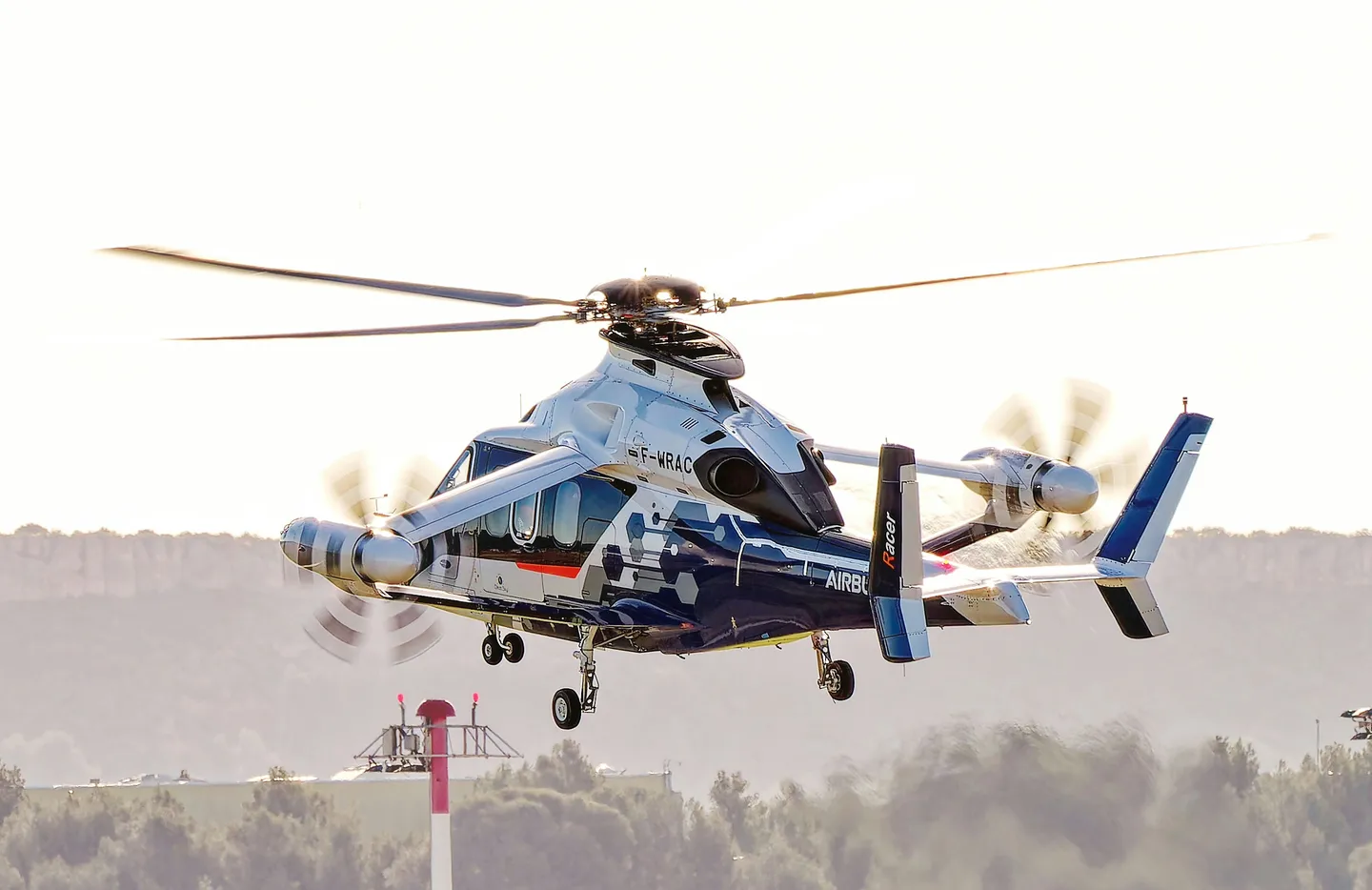How’s Airbus’ high-speed helicopter doing?

Half plane, half helicopter, Airbus Helicopters' experimental high-speed aircraft has made its first flight. “The goal of the helicopter is to go 50% faster than a conventional helicopter, but to be economical to operate” explains the company. All the details
The maiden flight lasted just 30 minutes, but can reach speeds of 400 kilometers per hour.
Airbus Helicopters on Monday unveiled Racer, its latest experimental high-speed helicopter in Marignane, southern France. The European aerospace manufacturer classifies the aircraft as a high-speed composite helicopter demonstrator. Unlike conventional helicopters, the Racer features fixed wings with control surfaces and propellers. “The goal of the helicopter is to go 50% faster than a conventional helicopter, but to be economical to operate,” explained Tomasz Krysinski, vice president “Research and Innovation” at Airbus Helicopters. Combining stability and speed, with Racer Airbus aims to conquer both the civil and military markets.
Racer's public debut came months after Italy's Leonardo and US manufacturer Bell announced a Memorandum of Understanding to evaluate collaboration opportunities in the field of tiltrotor technologies, Reuters recalls. Leonardo is also leading a separate project to develop the next generation of tiltrotors for civil use. Its AW609 is the only civilian design in existence, but it has yet to be certified.
All the details.
THE FEATURES OF RACER
It's half plane, half helicopter, featuring wings and two turbines on the sides, and, as its name suggests, the Racer is capable of reaching incredibly high speeds for a helicopter thanks to its propeller configuration. Airbus said the helicopter's current cruising speed is 400 km per hour, compared to traditional helicopter speeds of close to 260 km per hour.
“There is a main rotor and propellers for general aviation to go fast, but economically,” explained Tomasz Krysinski, vice president “Research and Innovation” at Airbus Helicopters.
SPEED FACTOR FOR DUAL HELICOPTER
“The issue of speed must be kept in mind, in particular for the civil market, but also for the military market – underlined the CEO Bruno Even – there are some types of mission, in which access as quickly as possible to an area in the context of rescuing personnel in danger, in the context of medical aid, in the context, potentially, of some military missions, it can represent a resource."
Such designs could also be offered for military developments as NATO conducts a major study of next-generation helicopters , although much depends on how its planners define future needs, Reuters reports.
THE TARGET
“The purpose of the Racer is not to go as fast as possible, but to offer improved operational capabilities at the right price for missions where speed can truly be an asset. When we ask end users if they care about high speeds, the answer is invariably “yes, but.” Speed at any price, without taking into account the economic and environmental impact, is of no interest to anyone,” explained program director Julien Guitton.
As mentioned, the inaugural flight lasted just 30 minutes, but Airbus aims to expand the Racer's flight envelope over the next two years as development continues.
THE FUTURE OF AVIATION
According to Quartz , the future of aviation appears to be headed in the direction where helicopter travel will become even more common. Airlines hope to offer passengers commuter services from city centers to airports within a few years. Those plans focus on semi-autonomous eVTOL aircraft. While electric helicopters have come a long way, the efficiency improvements promised by the Racer's innovations could prove useful for other aircraft.
This is a machine translation from Italian language of a post published on Start Magazine at the URL https://www.startmag.it/smartcity/come-va-lelicottero-ad-alta-velocita-di-airbus/ on Tue, 21 May 2024 03:18:22 +0000.
